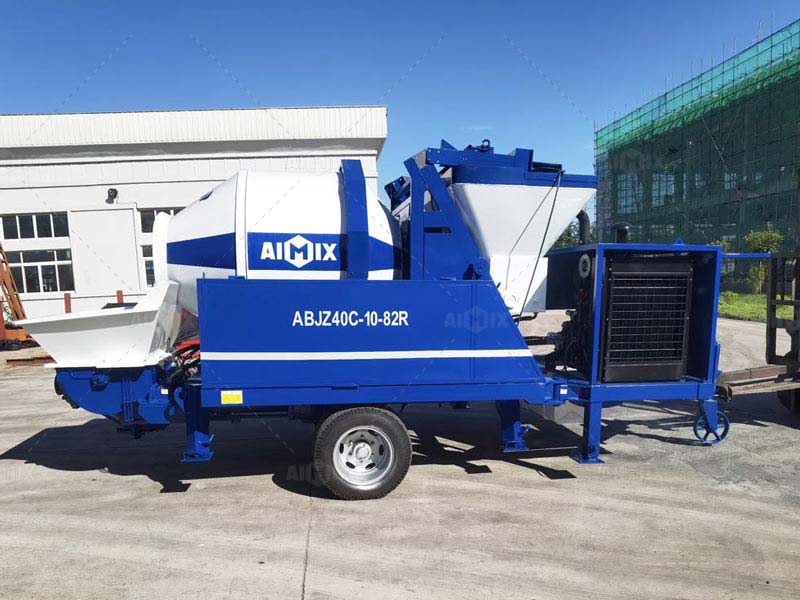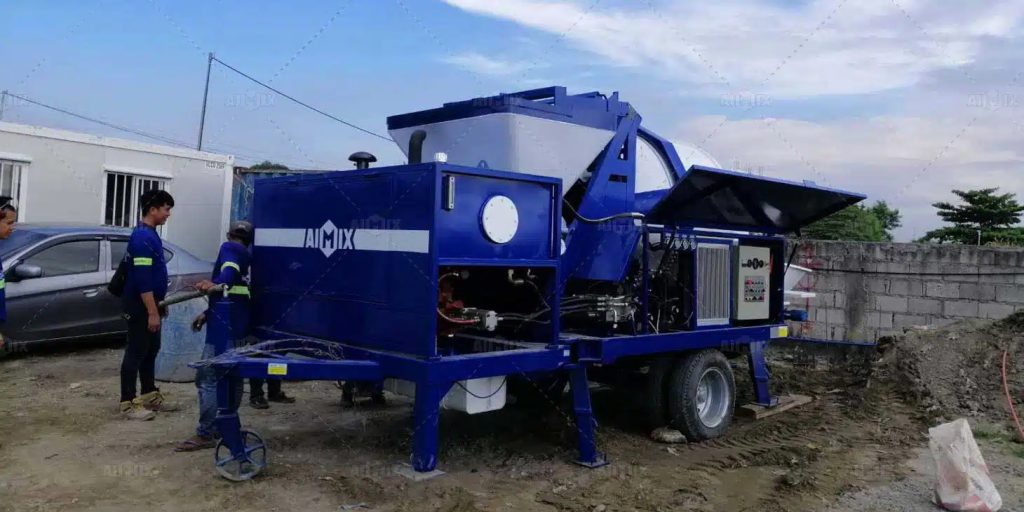Investing in a concrete mixer pump can significantly impact the efficiency and profitability of construction projects. A concrete mixer pump combines the functions of a traditional concrete mixer and a concrete pump, streamlining the process of mixing and placing concrete. However, before making such an investment, it is crucial to conduct a thorough cost-benefit analysis to determine the return on investment (ROI). This article delves into the methodology for calculating ROI for concrete mixer pump investments, ensuring that stakeholders can make informed decisions that optimize their financial and operational outcomes.
Understanding the Components of Cost-Benefit Analysis
Initial Investment Costs
The initial investment costs of a concrete mixer pump include the purchase price, transportation fees, and setup expenses. These costs can vary widely depending on the capacity, brand, and additional features of the concrete mixer with pump machine. It is essential to consider not only the upfront cost but also any potential financing charges if the purchase is made through a loan or lease. Additionally, training costs for operators and technicians should be factored into the initial investment to ensure smooth and efficient operation.

Operating and Maintenance Costs
Operating and maintenance costs encompass the expenses incurred during the day-to-day use of the concrete mixer pump. These include fuel or electricity costs, regular maintenance, and any repairs needed over the lifespan of the equipment. Regular maintenance is crucial to ensure the longevity and optimal performance of the mixer pump. It is also important to consider the availability and cost of spare parts, as well as the potential downtime during maintenance or repairs. Efficient maintenance practices can significantly reduce unexpected expenses and extend the useful life of the equipment.
Expected Benefits and Returns
The benefits and returns from investing in a concrete mixer pump are multifaceted. These include increased productivity, reduced labor costs, and enhanced project timelines. A concrete mixer pump for sale can streamline the concrete pouring process, allowing for faster and more efficient construction. This increased efficiency can lead to shorter project durations and potentially higher turnover rates for construction companies. Additionally, the quality of concrete placement can be improved, reducing the likelihood of costly rework. Quantifying these benefits in monetary terms is essential to accurately calculate the ROI.

Methodology for Calculating ROI
Formula for ROI Calculation
The formula for calculating ROI is straightforward yet powerful. It involves subtracting the total costs from the total benefits and then dividing the result by the total costs. The formula is expressed as follows:
\[ ROI = \left( \frac{Total\ Benefits – Total\ Costs}{Total\ Costs} \right) \times 100\% \]
This formula provides a percentage that represents the return on investment. A positive ROI indicates that the benefits outweigh the costs, while a negative ROI suggests the opposite. Accurately quantifying both mixer pump cost and benefits is critical to ensure the reliability of the ROI calculation.
Factors to Consider
Several factors should be considered when calculating the ROI for a concrete mixer pump investment. These include the projected lifespan of the equipment, anticipated usage rates, and the specific requirements of the projects it will be used for. Additionally, external factors such as market demand for construction services, potential changes in material costs, and regulatory requirements can influence the ROI. Sensitivity analysis can be performed to assess how changes in these factors impact the ROI, providing a more comprehensive understanding of the investment’s potential risks and rewards.
Case Study Illustration
Consider a construction company that invests in a high-capacity concrete mixer pump. The initial investment is $150,000, including training and setup costs. The operating and maintenance costs are estimated at $30,000 annually. The company expects to save $50,000 annually in labor costs and complete projects 20% faster, resulting in additional revenue of $40,000 per year. Over a projected lifespan of 10 years, the total benefits amount to $900,000, while the total costs are $450,000.
Using the ROI formula:
\[ ROI = \left( \frac{900,000 – 450,000}{450,000} \right) \times 100\% = 100\% \]
This positive ROI indicates that the investment in the concrete mixer pump is financially viable and can significantly enhance the company’s profitability. If you do not know how to calculate it, you can view this page and contact us for help: https://concretemixerwithpump.com/cement-mixer-pump/.
Conclusion
Conducting a detailed cost-benefit analysis and accurately calculating the ROI for a concrete mixer pump investment is essential for making informed financial decisions. By considering initial investment costs, operating and maintenance expenses, and expected benefits, stakeholders can evaluate the potential returns and determine the viability of the investment. This analysis not only ensures optimal resource allocation but also contributes to the overall efficiency and success of construction projects.